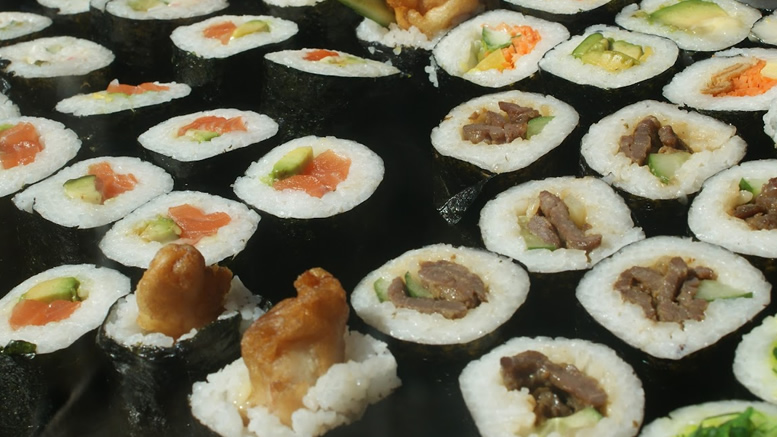Japanese cuisine is renowned for its meticulous presentation, rivaling even France in culinary artistry. Table arrangements are carefully crafted, with attention to detail extending to the smallest nuances, including the orientation of chopsticks.
At the heart of Japanese cuisine lies rice (gohan), the staple food of Japan. Locally grown medium-grained rice is preferred, reflecting Japan’s commitment to quality and tradition.
Unique to Japanese cuisine is the extensive use of raw ingredients. Tuna (akami) takes center stage in sashimi, often accompanied by soy sauce and fiery green wasabi mustard. Cooked dishes are light and delicately prepared, with minimal oil. Soups, whether clear broth or hearty miso, are savored alongside the main course.
Tempura, a beloved Japanese dish, involves dipping shrimp, squid, and vegetables in a light batter before deep-frying—a culinary art form in its own right.
A newcomer to the Japanese diet is red meat, with Kobe beef standing as a symbol of culinary excellence. Raised with meticulous care and pampering in Kobe, this prized beef is renowned for its exquisite marbling and unparalleled flavor, though it comes with a hefty price tag.
Japanese cuisine features an array of fresh vegetables, including bamboo shoots, onions, snow peas, eggplant, mushrooms, and potatoes, each adding depth and texture to dishes.
The evolution of Japanese fast food has led to the iconic Bento Box, dating back to the 1100s. Traditionally wooden boxes containing a complete meal of sushi or rice balls, vegetables, and dessert, Bento Boxes are now ubiquitous at train stations and convenience stores, offering a convenient and delicious meal option.
Tea is an integral part of Japanese culture, enjoyed with every meal and throughout the day. The famous Japanese tea ceremony, or chanoyu, is a highly formalized ritual dating back to the 13th century, embodying principles of harmony, respect, and tranquility.
Sake, a fermented beverage made from rice or other grains, has been enjoyed in Japan since ancient times. While its production methods have evolved, sake remains a cherished part of Japanese culinary heritage, offering a taste of tradition and craftsmanship in every sip





